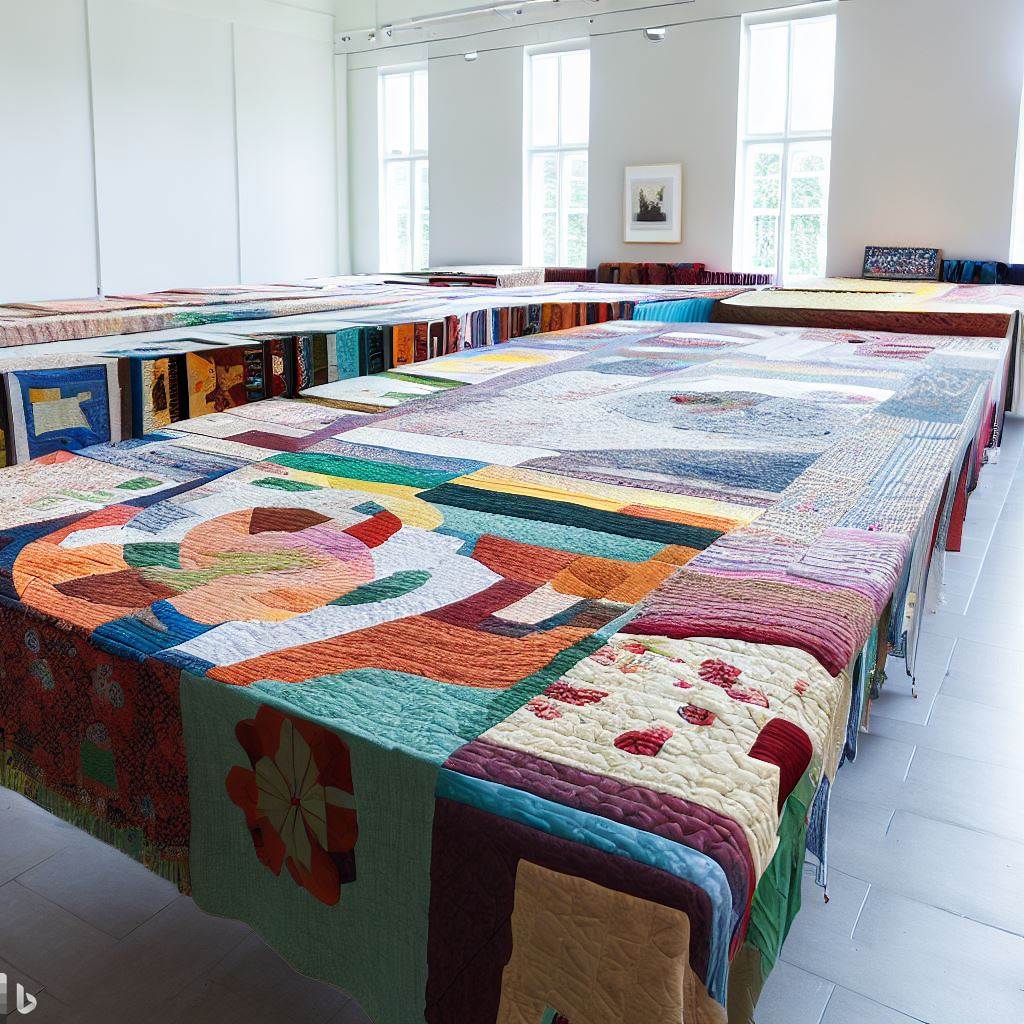Collecting Quilts: A Guide for Enthusiasts and Collectors
For quilting aficionados, building a quilt collection represents the ultimate expression of their passion. Curating a collection allows enthusiasts to surround themselves with diverse examples of the art form while potentially acquiring special pieces that will appreciate as investments. From articulating collection goals to proper handling, storage, and display, collectors must understand how to care for and grow their holdings as a true steward of the craft.
Defining a Central Focus
Quilt collections benefit tremendously from a clear focus to guide acquisition. Determining parameters creates a cohesive vision that helps build thematic resonance over time.
Style or Technique
Some collectors zero in on a style they love like art quilts, impressionistic landscape quilts, or modern graphic quilts. Others may focus on masterful examples of certain techniques like appliqué, embroidery, or quilting patterns. A technique or style focus provides continuity.
Regional Traditions
Collectors may opt to amass quilts reflecting a specific region’s aesthetic like quilts of the Appalachians or quilts from Amish communities. The regional scope offers cultural insights through quilting.
Color Palettes
Collectors drawn to certain color moods can curate quilts around a fixed palette like all blue and white quilts or warm earth-toned quilts. The color theme establishes visual harmony.
Time Period
Some collectors aim to amass historic quilts from a narrow time period such as Colonial era quilts or quilts of the 1960s. The period focus educates about styles and practices of the era.
Special Occasion
Quilts made for specific occasions like weddings, births, or graduations also unite a collection. The celebratory focus speaks to quilting’s role commemorating special milestones.
Researching Context and Significance
Understanding a quilt’s history and background contextualizes it within traditions and illuminates significance. This benefits both collectors and quilt owners.
Dating the Quilt
Establishing approximate date of origin helps relate a quilt to styles and practices of the period. Signs like fabric, dye methods, patterns, and stitching help date it. Condition also indicates age. This provides chronological context.
Determining Origin
Research may uncover where and by whom a quilt was made. Knowing origin explains regional or cultural style elements. Maker or location details often get conveyed through inscriptions, provenance records, or family histories.
Appreciating Rarity
Some vintage or antique quilts demonstrate rare patterns, techniques, or materials. Identifying such qualities elevates quilts as special artifacts within traditions. Rarity signals potential value for collectors.
Understanding Social Narratives
Studying quilts made by marginalized groups like Native Americans or enslaved people provides sociohistorical context about their lives and values stitched into textiles. Research helps honor their voices through quilts.
Best Practices for Care and Preservation
Quilt collectors have an ethical duty to preserve heritage by caring for quilts with best archival practices to minimize deterioration over time.
Gentle Handling
Quilts should get handled minimally and extremely carefully to avoid strain or tearing seams. Always support the full span when moving and avoid bunching. White cotton gloves prevent oils from hands further weakening fragile fibers and dyes.
Climate Control
Keeping quilts in climate controlled rooms avoids damage from humidity, heat, or light exposure. Ideal conditions are 60-72 degrees Fahrenheit and 50% relative humidity. Storing quilts in archival boxes adds extra climate buffering when not displayed.
Protecting from Light
Light fades dyes and ages fabric over time so quilts should not remain in direct sun or bright indoor light. UVA/UVB filtering sleeves can protect displayed quilts. Light exposure needs to be limited to preserve vibrancy.
Keeping Clean
Quilts only get vacuumed through a screening material to prevent snagging. Experts should handle stain treatment and wet cleaning. Cleaning helps retard chemical breakdown.
Displaying Safely
Quilts shown hanging should have sleeves to disperse weight evenly. Laid quilts need cushioning to prevent creasing. Plexiglass covering guards surface integrity. Proper display avoids stress and deterioration.
Growing a Collection Thoughtfully
Curating a quilt collection involves selecting acquisitions purposefully based on focus, significance, and budget. Priorities guide sound growth.
Defined Budget Philosophy
Quilt collecting requires dedicating a defined budget. Collector should decide if they want to acquire numerous affordable pieces or save for special investment quilts. Establishing budget focus helps guide choices.
Evaluating Condition Realistically
While flaws lower costs, condition issues like staining, tearing, or insect/rodent damage raise preservation concerns. Collectors must weigh desire for rare patterns or styles versus restoration practicality. Condition helps determine true value.
Seeking Shared Vision
The ideal acquisition expands on the collection’s core vision. Collectors should evaluate how new pieces complement existing holdings based on style, era, theme, or technique. Shared vision creates cohesion.
Balancing Passion and Practicality
The thrill of discovery while “hunting” quilts can override practical considerations. Collectors should balance excitement with analysis of authenticity, price relative to value, and condition. A passionate eye benefits from judicious reasoning.
Preserving History and Spreading Appreciation
For quilt aficionados, building a curated collection represents a profound opportunity to steward and safeguard tradition. Collectors become torchbearers, their holdings illuminating quilting heritage for themselves and generations to come. With mindfulness and care, the fabrics they salvage continue communicating their powerful tales of skillful hands, creative spirits, and communities bonded through threads.
